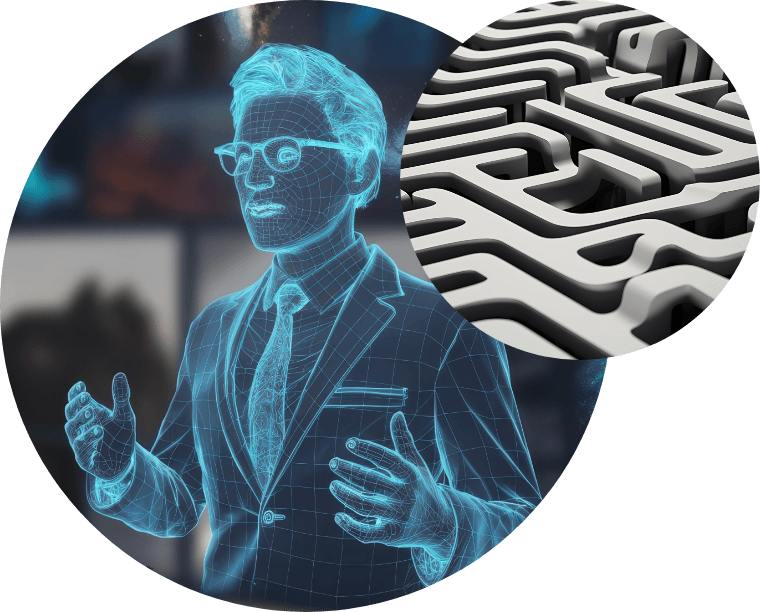AI Technology and the Future of Society
The Good and the Bad

The rapid advancement of technology, particularly in artificial intelligence (AI), is reshaping society in profound ways. Innovations in AI, quantum computing, automation, renewable energy, and biotechnology hold immense potential to address global challenges such as climate change, healthcare, and resource management. However, these breakthroughs also introduce complex risks that demand urgent attention.
This research cluster explores the multifaceted impact of emerging technologies, focusing on identifying and mitigating the risks associated with their misuse.
Cluster research inquiries
The increasing access to technology has significantly changed the landscape of organized crime, allowing criminal groups to operate more efficiently, expand their reach, and evade detection. Unfortunately, technology facilitates various criminal activities, including cybercrime, money laundering, and the illicit trade of goods and services.
The use of technology by organized crime has been causing the following problems:
Cybercrime, Money Laundering, Illicit Trade, Automation and Scalability, Global Reach: Technology allows organized crime groups to operate across borders, creating a more complex and challenging environment for law enforcement.
Examining the widespread social media addiction across all age groups, from children to seniors, and its societal consequences.
Social media addiction poses several risks that could significantly affect the future of humanity if left unaddressed. These risks span psychological, social, political, and even evolutionary dimensions:
Mental Health Decline at Scale
Increased anxiety, depression, and loneliness
Reduced attention span and cognitive control
Erosion of Social Cohesion
Polarization and echo chambers
Decline of real-world relationships
Manipulation of Beliefs and Behaviors
Misinformation and disinformation
Surveillance and behavioural nudging
Impacts on Education and Workforce
Reduced academic performance
Decreased productivity and creativity
Shaping Human Identity and Evolution
Altered self-perception
Selection pressures on cognition and behaviour
Geopolitical and Civilizational Risk
Algorithmic amplification of conflict
Erosion of truth and shared reality
Virtual or Digital Twins are virtual replicas of physical entities that mirror their behavior in real-time. These technologies are transforming industries such as healthcare, manufacturing, urban planning, and personal lifestyle management. While they offer immense potential for innovation, optimization, and predictive capabilities, significant ethical concerns must be addressed to ensure their responsible use.
GBL is an advanced machine learning technique that leverages graph structures to model relationships and interactions. It is revolutionizing fields like social network analysis, recommendation systems, fraud detection, and biological research. While it excels at analyzing complex, interconnected data, GBL also empowers both good and bad actors to manipulate people on a large scale. This raises critical ethical concerns that society must address.
Graph-based learning has a profound impact on society by transforming the way we model and analyze complex relationships across various fields. It enables us to understand and predict trends in areas like urban planning, healthcare, and finance, leading to more informed decision-making and potentially better outcomes.
Some of the societal impacts are described below:
1. Enhanced Understanding of Complex Systems
Urban Planning
Graph learning can be used to analyze traffic patterns, optimize transportation networks, and predict future mobility trends, leading to more efficient urban environments, according to Google Research.
Healthcare
It aids in drug discovery by modelling molecular interactions and identifying potential drug candidates. In medical diagnosis, it helps analyze patient data and identify patterns of disease.
Finance
Graph learning can detect fraud, money laundering, and other financial crimes by analyzing transaction networks and identifying suspicious patterns, according to Google Research.
Social Networks
Graph learning facilitates the understanding of social dynamics, identifies influential individuals, and analyzes the spread of information within networks.
2. Improved Decision-Making and Prediction:
Recommendation Systems
Graph learning can personalize recommendations by leveraging social and knowledge graphs, leading to more relevant and engaging experiences.
Supply Chain Management
By modelling supply chain relationships, graph learning can optimize inventory, reduce waste, and improve logistics.
Risk Assessment
In various fields, graph learning can help assess risks by analyzing data and identifying potential vulnerabilities.
3. Advancements in Specific Industries:
3D Vision:
Graph-based methods are being used to enhance 3D vision tasks, including object recognition and scene understanding.
Network Analysis and Classification
Graph learning enables the analysis and classification of network data, providing insights into the structure and dynamics of networks.
Time Series Classification:
It’s being used to classify time series data, including the analysis of stock market trends and the prediction of future outcomes.
